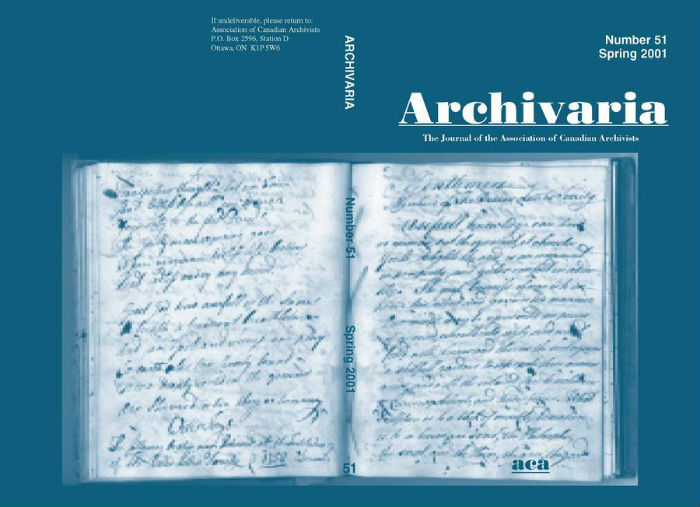Finding "Enlightenment" in the National Archives of Canada: The Commonplace Book of James Sholto Douglas
Résumé
This article chronicles the author’s exploration of the provenance and content of the papers of James Sholto Douglas, a student at the University of Edinburgh during the 1750s. Extrapolating from science historian Bruno Latour’s concept of “ready-made” science, the author argues that the processes of acquisition, organization, and description create a “black box” around the record. Through opening the black box, the archivist gains a better understanding, not only of the documents but also of the process behind their acquisition and description. The James Sholto Douglas papers are an excellent example of the education and thought which existed during the Scottish Enlightenment; they also constitute an excellent case study of how deconstructing a record’s context can bring enlightenment.
Résumé
Cet article présente l’exploration qu’a faite l’auteur relativement à la provenance et au contenu des documents d’archives laissés par James Sholto Douglas, qui fut étudiant de l’Université d’Edinbugh durant les années 1750. Dans la foulée du concept de science prêt-à-porter (“ready-made” science) mis de l’avant par l’historiendes sciences Bruno Latour, l’auteur tente de démontrer que le processus d’acquisition, d’organisation et de description crée autour des documents une « boîte noire ». Enouvrant cette boîte, l’archiviste peut obtenir une meilleure compréhension, non seulement des documents, mais du processus de leur acquisition et de leur description. Ainsi, les archives de James Sholto Douglas ne sont pas qu’une excellente illustration de l’éducation et de la pensée durant la période des Lumières écossaise, ils permettent également de bien démontrer comment la déconstruction du contexte des documentsest éclairante.
Authors of manuscripts accepted for publication retain copyright in their work. They are required to sign the Agreement on Authors' Rights and Responsibilities that permits Archivaria to publish and disseminate the work in print and electronically. In the same agreement, authors are required to confirm that "the material submitted for publication in Archivaria, both in its paper and electronic versions, including reproductions of other works (e.g. photographs, maps, etc.) does not infringe upon any existing copyright." Authors of manuscripts accepted for publication retain copyright in their work and are able to publish their articles in institutional repositories or elsewhere as long as the piece is posted after its original appearance on archivaria.ca. Any reproduction within one year following the date of this agreement requires the permission of the General Editor.





